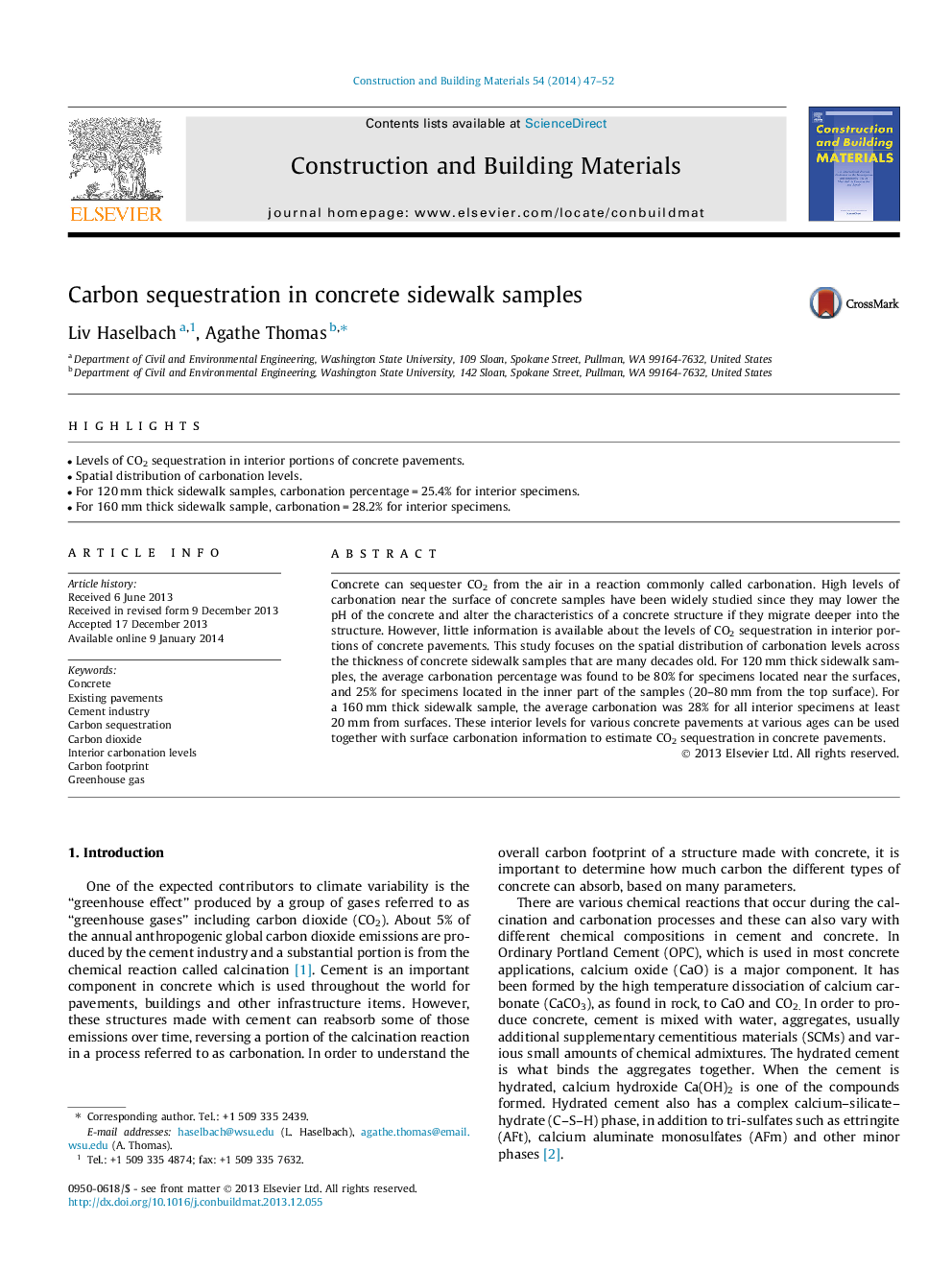| Article ID | Journal | Published Year | Pages | File Type |
|---|---|---|---|---|
| 6723571 | Construction and Building Materials | 2014 | 6 Pages |
Abstract
Concrete can sequester CO2 from the air in a reaction commonly called carbonation. High levels of carbonation near the surface of concrete samples have been widely studied since they may lower the pH of the concrete and alter the characteristics of a concrete structure if they migrate deeper into the structure. However, little information is available about the levels of CO2 sequestration in interior portions of concrete pavements. This study focuses on the spatial distribution of carbonation levels across the thickness of concrete sidewalk samples that are many decades old. For 120Â mm thick sidewalk samples, the average carbonation percentage was found to be 80% for specimens located near the surfaces, and 25% for specimens located in the inner part of the samples (20-80Â mm from the top surface). For a 160Â mm thick sidewalk sample, the average carbonation was 28% for all interior specimens at least 20Â mm from surfaces. These interior levels for various concrete pavements at various ages can be used together with surface carbonation information to estimate CO2 sequestration in concrete pavements.
Related Topics
Physical Sciences and Engineering
Engineering
Civil and Structural Engineering
Authors
Liv Haselbach, Agathe Thomas,
